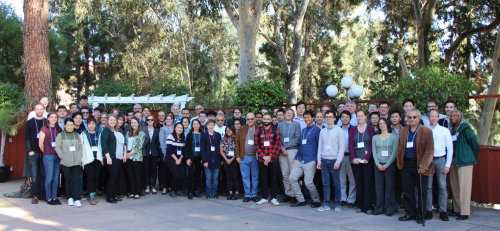The National Science Foundation has renewed for five years and more than $22 million the cutting-edge Science and Technology Center on Real-Time Functional Imaging (STROBE). STROBE is developing the Microscopes of Tomorrow, and is a partnership between six institutions –– University of Colorado Boulder, UCLA, UC Berkeley, Florida International University, Fort Lewis College, and UC Irvine.
STROBE is advancing functional electron and light-based microscopies by integrating advanced algorithms, big data analysis and adaptive imaging to address issues that have the potential to transform imaging science and technology.
“The Vision of STROBE is to transform nanoscale imaging science and technology by developing the microscopes of tomorrow,” according to Margaret Murnane and Jianwei “John” Miao, the Director and Deputy Director of STROBE. Miao is a professor of physics at UCLA, and member of UCLA’s California NanoSystems Institute. Murnane is a Distinguished Professor at CU Boulder, and a Fellow of JILA, a joint institute between CU Boulder and NIST.

Group photo of STROBE center members at a retreat in November 2019.
STROBE is pushing electron, X-ray and nano-optical imaging to their limits by integrating state-of-the-art microscopes, with advanced algorithms and big data. Multiscale and multimodal imaging of the same samples are needed to tackle major scientific challenges in quantum, energy, disordered and biological materials. Major scientific challenges include a fundamental understanding of how to design materials at the nanoscale to enable more efficient and robust nano, energy and quantum devices. Other important grand challenges include techniques for imaging disordered materials, or understanding how atoms rearrange themselves in 3-D during the glass transition. “Addressing these major scientific challenges requires the development of new multiscale microscopes and methods, and combining them with common samples, fast detectors, big data, advanced algorithms and machine learning — which could not be accomplished without a center,” Miao said.
STROBE also integrates cutting-edge research with education through the multidisciplinary training of a diverse workforce – with the important goal of preparing a diverse group of trainees for long-term STEM careers through coordinated team projects with academe, national laboratories and industry, new multidisciplinary degree programs, multiple opportunities for professional development and through long-term programs based on best practices for broadening participation in STEM. STROBE’s new techniques, algorithms and instrumentation are in high demand, and STROBE is engaging in multiple routes for knowledge transfer with 77 partners in the academic, national laboratories and industry sectors. Over 92 graduated student and postdoctoral scientists have graduated from STROBE, as well as >125 undergraduate scholars.
Prof. Naomi Ginsberg is the STROBE lead at UC Berkeley, Prof. Jessica Ramella-Roman leads the team at Florida International University, Prof. Kay Phelps is the lead at Fort Lewis College, while Prof. Franklin Dollar is the lead at UC Irvine.
NSF science and technology centers conduct innovative, potentially transformative, complex research and education projects involving world-class research through partnerships among academic universities and industrial organizations in important areas of basic research. STROBE 77 partners span 43 academic, 22 industry and 7 national laboratories, including DOE, NIST, Moderna, 3M, SRC, Intel, AMD and Ball Aerospace.